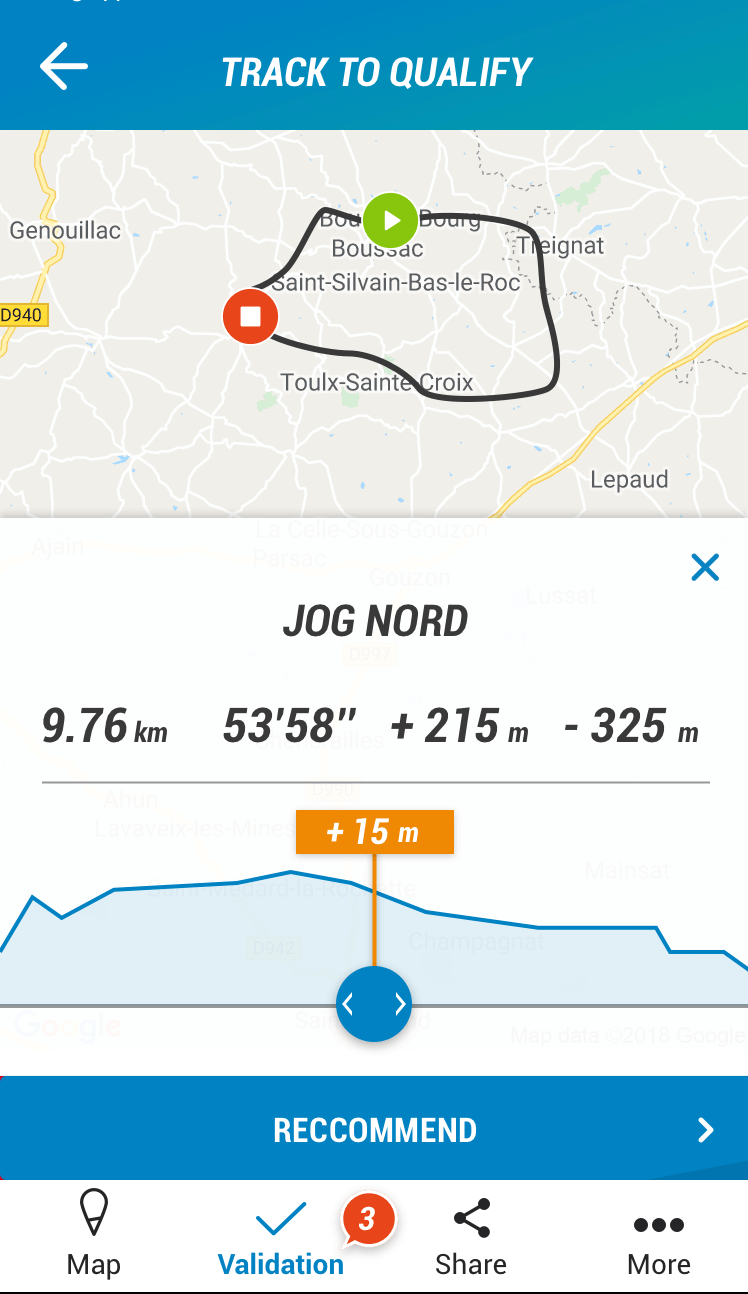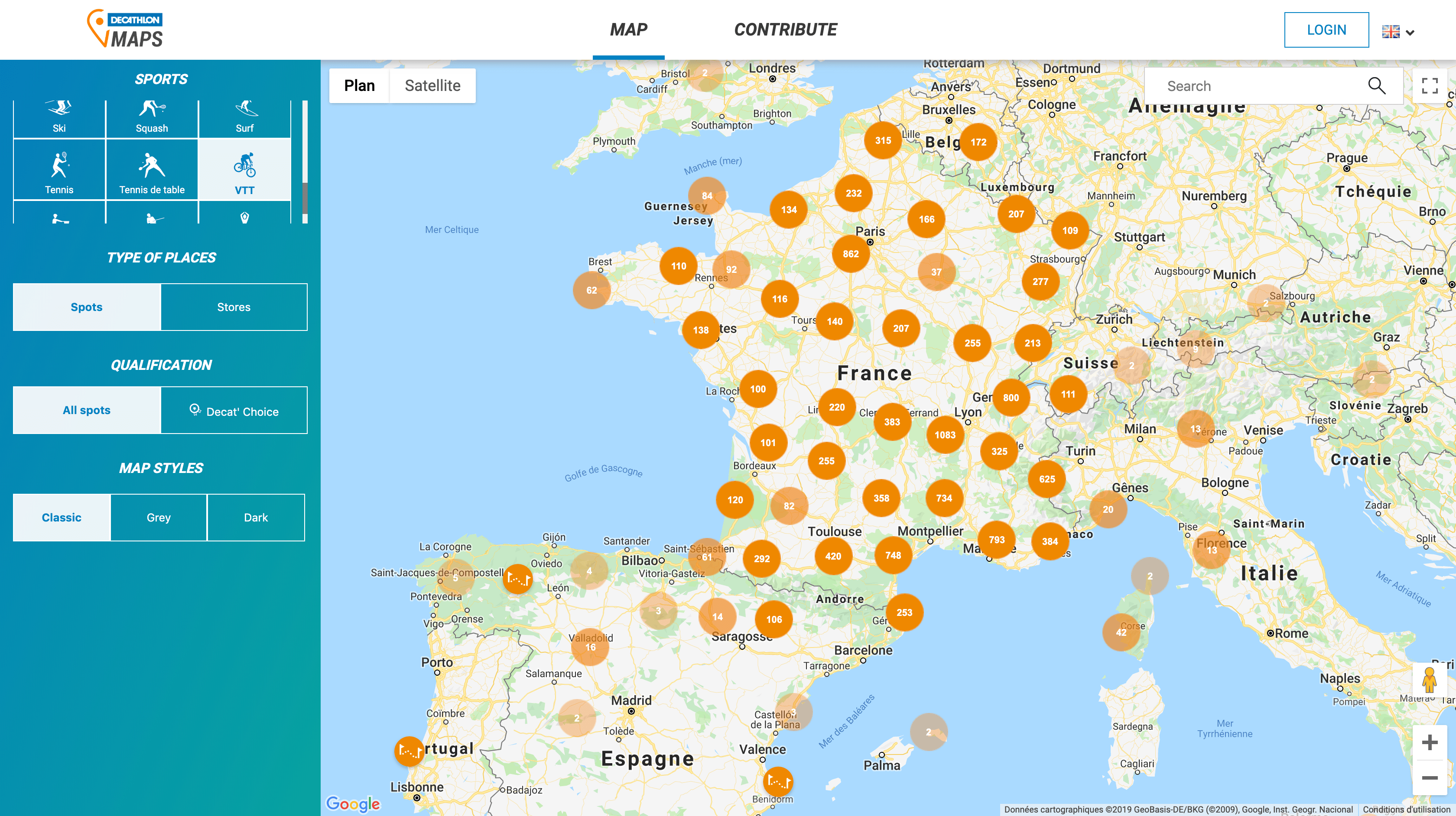Full-stack Javascript developer @Decathlon Maps





About Decathlon Maps
Decathlon is the largest sporting goods retailer in the world. In addition to their information system and their online store, they offer several sport-related applications to their customers. Decathlon Maps is one of these applications.
Decathlon Maps is a Progressive Web App (PWA) that you can think of as a specialized Google Maps for sports of all kinds. The idea is to reference as many sport places as possible, including sport-specific data e.g. distance and elevation for running tracks. Users can not only search for sport places but import their own from third-party apps or GPX files.
The application aims at providing a native-like experience for mobile users. The application had us face many technical challenges, including making the Map as smooth as possible on mobile devices despite the very large number of displayed sport places, scrapping data from several websites that didn’t have any API, and working with geo-location data from different sources that don’t share the same conventions.
My contribution
I did my best to improve the overall quality of the existing code bases through automatic testing, a more consistent coding style, and the introduction of new programming techniques. Specifically:
- I introduced end-to-end automatic testing of the application (using Cypress)
- I added unit tests to th existing code base and encouraged my coworkers to thoroughly test any new feature
- I pushed for the adoption of a proper code delivery workflow that relied on merge requests, in place of the former push to master approach
- I refactored the codebase and shrunk its overall size by 30%
- I introduced linters and pre-commit hooks to enforce a common code style throughout the team
I developed several features, both on the back-end side (node.js, Koa and Postgres) and the front-end side (React, Redux and Redux Saga)
I taught a few functional programming principles (referential transparency and composition) to my coworkers and introduced Redux Saga. I encouraged a strict separation of business logic from side effects, that in turn led to a better testability of the codebase and easier maintenance overall


